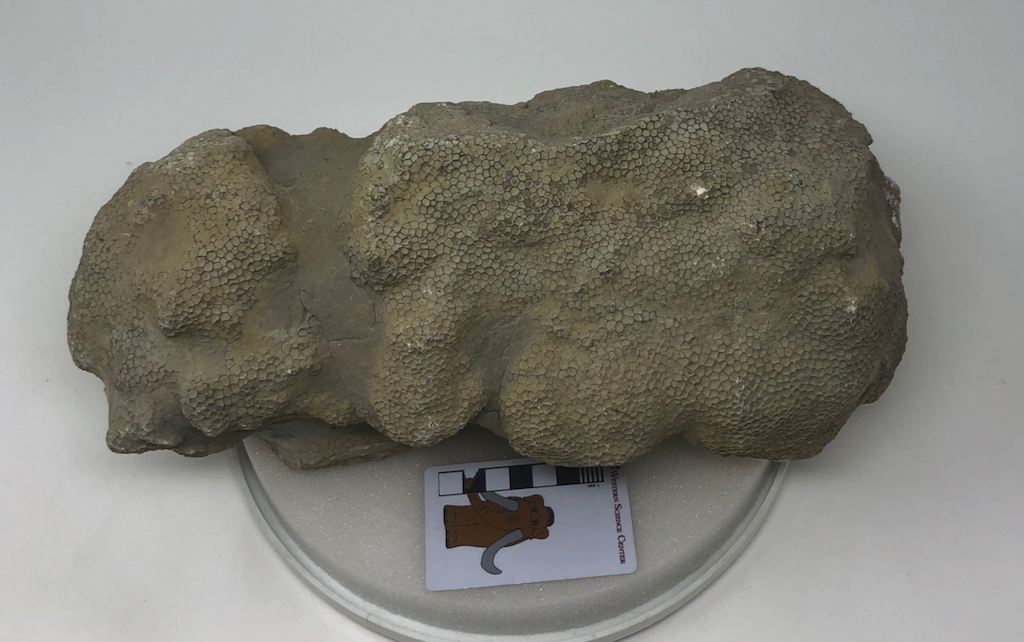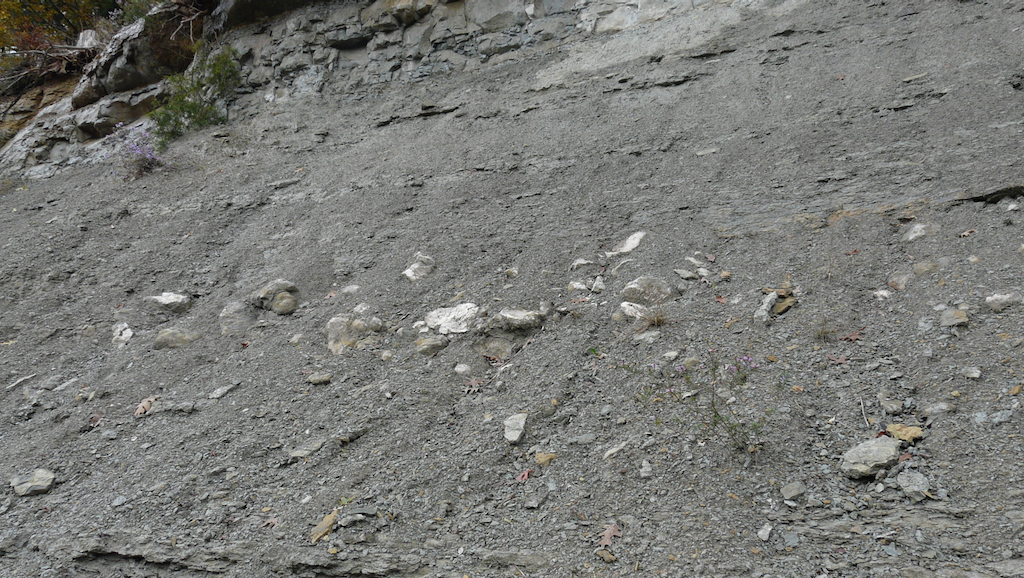 Corals are such an iconic part of the modern ocean, it's easy to overlook the fact that they didn't become widespread until the Ordovician Period, 4 billion years after the Earth formed and some 30 million years after the Cambrian Explosion.The coral shown above is Foerstephyllum, and example of a tabulate coral. The Tabulata are one of the two common types of fossil corals in the Paleozoic Era, along with the Rugosa. Of course, an important reason these groups are common as fossils is because they made large calcite structures that preserve very well. At least in the modern ocean, there are many soft-bodied corals that would be much less likely to fossilize, and that may have been the case in the past as well.This Foerstephyllum head comes from the Drakes Formation near Bardstown, Kentucky. There is a layer within this unit that is made mostly of large coral heads:
Corals are such an iconic part of the modern ocean, it's easy to overlook the fact that they didn't become widespread until the Ordovician Period, 4 billion years after the Earth formed and some 30 million years after the Cambrian Explosion.The coral shown above is Foerstephyllum, and example of a tabulate coral. The Tabulata are one of the two common types of fossil corals in the Paleozoic Era, along with the Rugosa. Of course, an important reason these groups are common as fossils is because they made large calcite structures that preserve very well. At least in the modern ocean, there are many soft-bodied corals that would be much less likely to fossilize, and that may have been the case in the past as well.This Foerstephyllum head comes from the Drakes Formation near Bardstown, Kentucky. There is a layer within this unit that is made mostly of large coral heads: This bed is close to the top of the Ordovician; in fact, the massive rocks visible in the upper left corner are Silurian, although I think there is an unconformity between them.Tabulate corals remained as significant reef-builders up to the end of the Paleozoic Era. They went extinct, along with the rugose corals and about 90% or more of all marine species, in the devastating mass extinction at the end of the Permian Period.This specimen of Foerstephyllum is currently on display at the Western Science Center in the "Life in the Ancient Seas" exhibit, and a 3D model is available for viewing and download on SketchFab at https://skfb.ly/6NtRI.
This bed is close to the top of the Ordovician; in fact, the massive rocks visible in the upper left corner are Silurian, although I think there is an unconformity between them.Tabulate corals remained as significant reef-builders up to the end of the Paleozoic Era. They went extinct, along with the rugose corals and about 90% or more of all marine species, in the devastating mass extinction at the end of the Permian Period.This specimen of Foerstephyllum is currently on display at the Western Science Center in the "Life in the Ancient Seas" exhibit, and a 3D model is available for viewing and download on SketchFab at https://skfb.ly/6NtRI.
